
Sheffield Betel Tray & Set, circa 1930
Rare Silver Plated Betelnut Set & Tray made in England for the Malay-Indonesian Market
Sheffield, England
circa 1930
length: 23.5cm, height: 9.2cm, width: 12.4cm, weight: 1,949g
This tray with a fitted drawer and an open top that holds five lidded containers was made in Sheffield in northern England in the early 20th century for Islamic Malay and Indonesian market. It was used to hold and serve betel, a mild social narcotic.
The tray has two handles for carrying at either end, sides that slope upwards and outwards, and an engraved band of scrollwork that runs right around the sides. The tray sits on four flattened spherical feet.
The base of the tray is impressed with a company logo that appears to have the letters ‘WMCo’ and ‘Viceroy Plate’ as well as the model numbers ‘8 3 4’ and ‘6’.
The various elements of the betel quid – the nut itself, perhaps chewing tobacco and maybe cloves, were kept in the spherical containers. Powdered lime paste was kept in the cylindrical container. The drawer was where the betel leaf was kept which was used to wrap the elements that made up the quid. The rectangular compartment on the top that is vacant is where the betel shears or cutters would have been kept. These were usually made separately from the sets in Southeast Asia and it is likely that such a cutter was not included in this set but was to be added in the destination market.
The set follows the traditional form of such a set which on the Malay Peninsula and Java and Sumatra would have been made from silver or perhaps tortoiseshell with metal mounts.
Utensils made in the UK for Southeast Asian betel use are rare and barely recorded. This example is in excellent condition. Importantly, there is almost no wear to the plating.
Provenance
UK art market
Inventory no.: 3892
SOLD

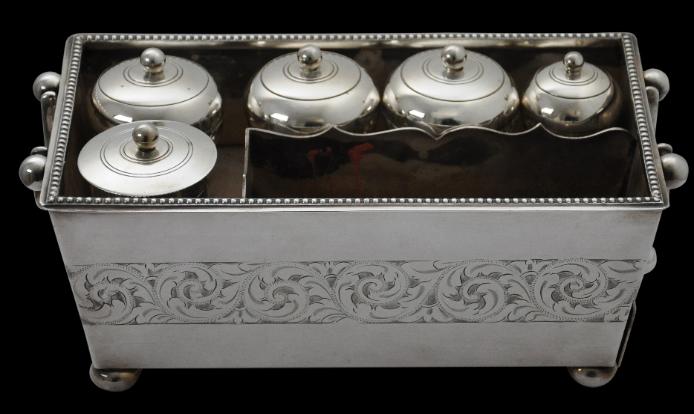
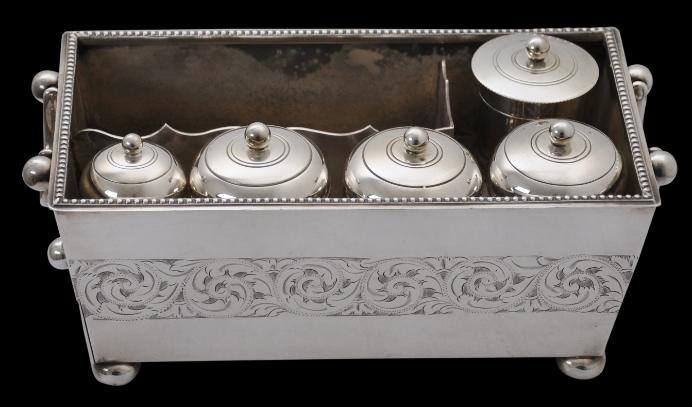
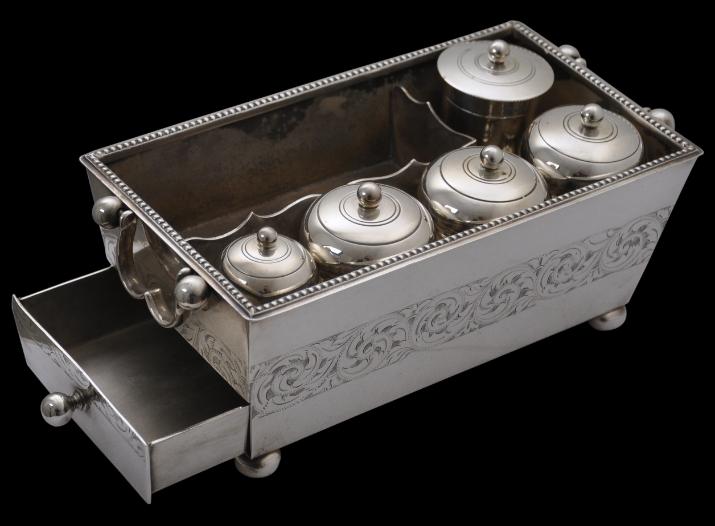
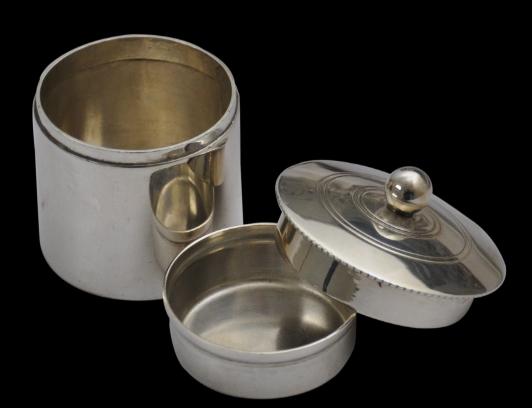
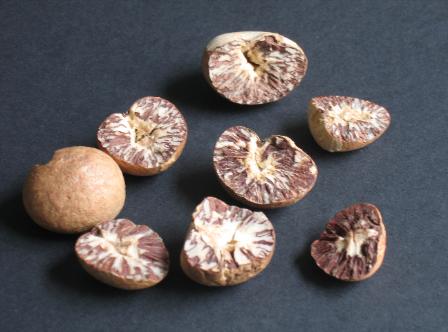
Dried betel kernels that have been cracked open.
Each is about 1.5 cm across.
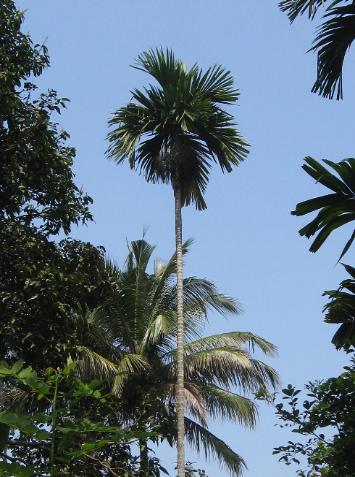
An areca palm from which betel nuts are sourced. Southern Sri Lanka.
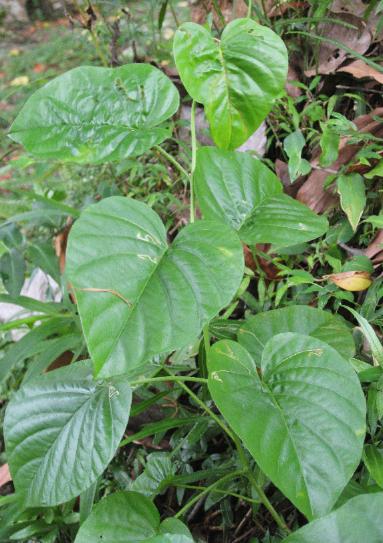
The betel vine used to wrap the betel quid for chewing. Photographed in central Sri Lanka.
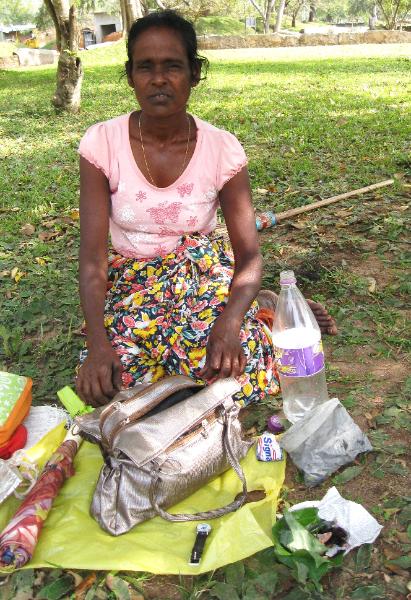
A lady in central Sri Lanka – all the ingredients for the betel quid are in the right foreground of the picture.

